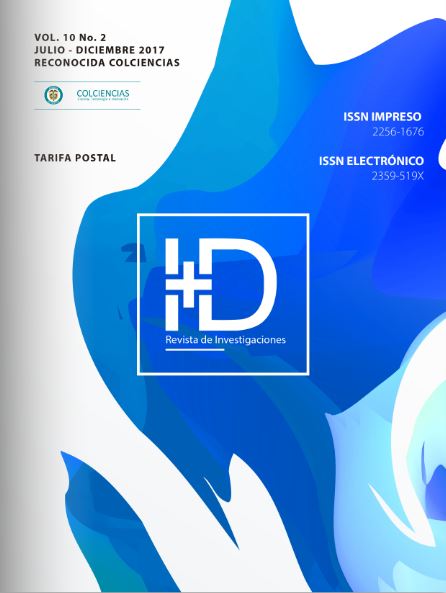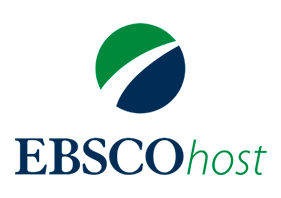Business model for marketing films and coatings groceries in Bucaramanga
DOI:
https://doi.org/10.33304/revinv.v10n2-2017002Keywords:
marketing, films, coatings, comestible, business modelAbstract
Films and edible coatings are practical to protect food from external contaminants and their natural process of decomposition looking to extend their shelf life. This practice has been growing in countries like China and Spain from processes of research, development and innovation in the generation of natural biopolymers, using raw vegetable or animal origin materials. In Colombia there have been studies in universities, highlighting technical studies to create new types of films and coatings. The proposed business model, warns that in Bucaramanga entrepreneurs in the food sector, need to understand this technology, sensitizing them to develop projects, enabling them to be more competitive in international markets. The focus of this research is exploratory and the sample selected for convenience; supported depth interviews applied with experts from companies in the food sector. The interview is structured with open questions. In the analysis of the arguments of the respondents, situations common agricultural industry are identified, throwing as a result the non-viability of the business model for this city, for its low interest in investment for research and development projects.Downloads
References
AINIA. Centro tecnológico. Soluciones para tu innovación(2013). ¿Recubrimientos comestibles en alimentos? ¿para qué?
Alarcón Aranguren, L. M. & Barajas Sepúlveda, D. F. (2013). Biopolímeros: una alternativa para la elaboración de empaques agroindustriales. I+ D REVISTA DE INVESTIGACIONES, 1(1).
Borello, A. (2000). El plan de negocios: de herramienta de evaluación de una inversión a elaboración de un plan estratégico y operativo. McGraw-Hill Interamericana.
Bucaramanga, A. d. (2014). Planeación de ordenamiento territorial de Bucaramanga: Alcaldía de Bucaramanga.
Bucaramanga, C. d. C. d. (2015). Producto Interno Bruto por departamentos. from http://www.camaradirecta.com/temas/indicadoresantander/indicadores/pibxdptos.htm
Carrión, G. X. (2016). UNOS RECUBRIMIENTOS COMESTIBLES DESARROLLADOS EN LA UPNA PERMITEN EXTENDER LA VIDA ÚTIL DE PESCADOS Y MARISCOS. In U. P. d. Navarra (Ed.), Universidad Pública de Navarra. http://www.unavarra.es/actualidad/noticias?contentId=220172.
Edible Films and Coatings as Biodegradable Active Packaging in Food Preservation.
Durango, A. M. A., Margarita Rosa; Soares, Nilda de Fátima. (2013). Avances en alimentos y sus tendencias. 9(135).
Embuscado, M. E., & Huber, K. C. (2009). Edible Films and Coatings for Food Applications: Springer Science+Business Media,.
Mendoza García, E. M. (2009). DESARROLLO, CARACTERIZACIÓN Y APLICACIONES ALIMENTARIAS DE PELÍCULAS COMESTIBLES BASADAS EN ZEÍNA DE MAÍZ. (Maté Caballero, Juan Ignacio), Universidad Pública de Navarra.
Osterwalder, A., & Pigneur, Y. (2011). Generación de modelos de negocio. (L. Vázquez, Trad.) Barcelona, España: Grupo Planeta.
Publishing, M. (2007). El plan de negocios. Ediciones Días de Santos.
República, A. C. p. l. r.-P. d. l. (2008). Diagnóstico Socioeconómico Departamento de Santander. from http://www.incoder.gov.co/documentos/Estrategia%20de%20Desarrollo%20Rural/Pertiles%20Territoriales/ADR_HOYA%20RIO%20SUAREZ/Documentos%20de%20apoyo/Diagnostico_Socio_Economico_Santander%5B1%5D.pdf
Stutely, R. (2000). Plan de negocios: la estrategia inteligente. México: Prentice Hall.
Sumimoto, M. (2008). Empaques y películas biodegradables y/o comestibles para alimentos - See more at: http://www.revistavirtualpro.com/revista/empaques-y-envases-para-alimentos/19#sthash.ssO63GcM.dpuf. Virtualpro, 81.
VARELA, A. (2012). Los “Y” ó millennials: atributos generacionales versus perfil ideal del extensionista contemporáneo. Jornadas Nacionales Extensión Rural, 18, 07-09.
Villanueva, J. D. B., & Baca, W. F. (2016). LOS MILLENNIALS PERUANOS: CARACTERÍSTICAS Y PROYECCIONES DE VIDA. Gestión en el Tercer Milenio, 18(36), 9-15.
Ziani , K. (2008). Películas biodegradables activas a base de quitosano: desarrollo y caracterización de sus propiedades tecnológicas y su aplicación en la protección de semillas de alcachofa. (Maté Caballero, Juan Ignacio), Universidad Pública de Navarra












